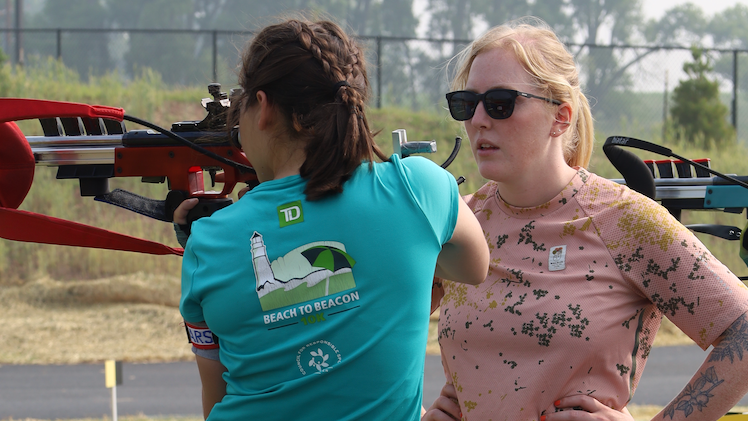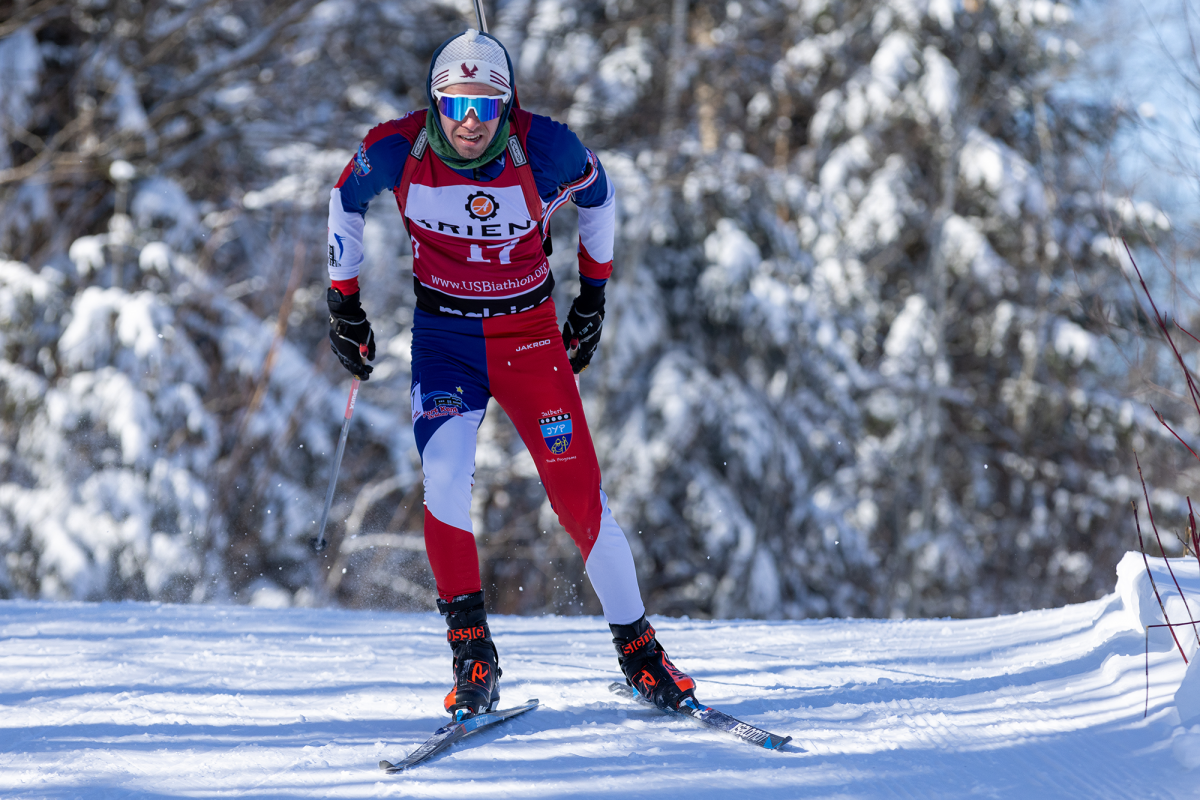
So far this season, Sadie Bjornsen has been on a quest to make the heats in a World Cup sprint. And while her silver medal with Kikkan Randall in the team sprint in Dusseldorf, Germany was more than she had expected, she still hasn’t crossed her original goal off the list.
Today in Milan, Italy, Bjornsen came the closest she’s ever been to the quarterfinals, finishing 31st in the qualifier. That put her just 0.14 seconds on the wrong side of the cutoff in the 1.4 k skate sprint.
“It’s kind of a bummer because it’s 31st,” she told FasterSkier’s Topher Sabot just after finishing. “That’s like the worst place you can get!”
The fact that she was racing at all, not to mention finishing so close to the heats, is good progress for the APU/US Ski Team racer. After wrapping up the first period of World Cup racing she had headed back to the States, where she planned to race at U.S. Nationals, but her plans were scrapped when she fell ill.
“I was sick for three weeks, the whole time I was at home,” Bjornsen said. “So I pretty much went back to the U.S. to get sick. It was great.
“The plan was to go back and get some confidence in the U.S., and I was looking forward to that.”
While she was home Bjornsen was unable to do any intensity training, although she did go for an easy ski every day to “keep the blood flowing.” She began to feel healthy again just before leaving for Europe, but the plane ride across the Atlantic reinflamed her sinuses.

By Friday, however, the young American was feeling more optimistic about the weekend of city sprints in Milan, and even threw some speed into her pre-race workout.
“The thing is when you’ve gone that long without going hard, it feels really good to go hard,” she said. “So it felt nice.”
On Saturday, Bjornsen felt that she skied well and didn’t make any technical errors. She said that had used the lessons she learned from her earlier World Cup starts. Even without the morale boost she would have gained from a successful week of domestic racing in the U.S., she had plenty to go on.
“The last sprint that I did before I left Europe, in Davos, I was really confident going into that and then I kind of just forgot to use my legs,” Bjornsen explained. “So today when I started I was thinking, you have to use your legs, you have to use your legs… [and] in Dusseldorf, it was over before I knew it and you felt like you never even got in a rhythm. Today it was nice because it’s long enough that you can get in a rhythm.”
While 31st is her best individual result yet, Bjornsen said that at the moment she couldn’t fully appreciate it.
“I’m sure that in a couple hours I’ll feel excited about that, but for now, it’s just hard,” she lamented. “When you get that close it’s right there, but at the same time so far. You get constantly reminded that you have to try, try again, and that it takes a long time to make the heats.
“It’s nice to take a step back and say, you know what, it’s going up from here.”

Bjornsen’s teammate Ida Sargent has had a similar experience on the World Cup so far. She qualified for the heats in the last December sprint, in Rogla, Slovenia, but today it was back to missing out. She placed 43rd in the qualifier, over 13 seconds behind Anne Kylloenen of Finland and roughly four away from the heats.
While Sargent said that the whole experience was “fun”, it wasn’t one of her best efforts and she didn’t think the course suited her.
“It wasn’t great,” she told FasterSkier. “I would have liked more hills. It was kind of a weird course just being V2 the whole time.”
While Bjornsen has “always liked quick, short, flat things,” Sargent felt that she never had anything to dig into in the Milan park. She also realized that she had made some tactical errors when choosing her lines around corners.
“I think I took the wrong lane a couple times where it was really skied-in on the gradual downhills,” the Vermonter explained. “I was on the inside, and I’m watching everybody else going on the outside. So I think that was a big mistake.”
Both Sargent and Bjornsen have been in the unenviable position of never knowing exactly what a competitive pace is in a World Cup qualifier.
“In the heats you know how everyone’s skiing and you can keep up more, but when you’re on your own – I haven’t skied heats yet this year – it’s hard to know how fast you’re going,” Bjornsen said. “You feel like you’re going as hard as you can, but there’s that extra [gear], and I’m sure I missed a little bit of that.”

The last U.S. racer was Mikey Sinnott, a Sun Valley Gold Team member who earned start rights thanks to his success on the U.S. SuperTour. Sinnott’s European World Cup debut was marred by a crash after one of his skis got mired in the softening snow.
“I was just no-poles skiing down here and my tip caught some of the mush,” he said after the race. “It just pulled me back and I went down.”
Sinnott’s crash came early in the course, but was impossible to make up for. In a rush of adrenaline, he attacked the first lap as soon as he got up, but then ran out of steam in the second lap and finished 68th.
“I really just charged a little too hard at the start and really got tired by the end,” he said.
Like Sargent, he didn’t think that the flat, short course played to his strengths.
“It was not a great course for me, coupled with the fall, I don’t know,” said an ambivalent Sinnott. “So it goes. At least I got that out of my way I guess.”
Sinnott, who has previously raced World Cups in Canada, said that today’s field was not much different; like the North American races, the roster was pared down thanks to many top athletes recovering from the grueling Tour de Ski.
What was different was the milieu and the crowds. He’d never done a city sprint in Europe.
“It’s pretty cool – it’s a pretty fantastic crowd right in the city, cheering you on real loud even if you fall,” he said.
Sargent and Bjornsen have raced in the cities before, but they were still impressed with the atmosphere.
“There were so many people – it was really loud out there!” exclaimed Sargent.
She described the challenges that go along with the excitement of city racing. With no snow in sight, it was difficult to prepare for a ski race.
“It’s hard warming up,” Sargent said. “It’s a little bit different because you can only be on the course for such a short amount of time. You have to get creative – I ran quite a bit. The course is open for about 30 minutes, so I skied then, but then I ran.”
While she and Bjornsen missed out on the quarterfinals, they have made sure that they didn’t miss out on the city. To combat the time zone change, they explored the city one day while they tried to stay awake.
And on Sunday, they’ll have one more chance to make it in Milan. The two will pair up for the team sprint.
“Hopefully tomorrow it will be a little bit less jet-lagged,” Bjornsen said. “It was a little rough last night. I wasn’t really sleeping.”
They hope that cheers from the crowd will give them an extra boost.
“The scene is really something,” Bjornsen marveled. “This is the craziest thing I’ve been to. It’s so cool!”
Qualification results: men / women
Topher Sabot contributed reporting



